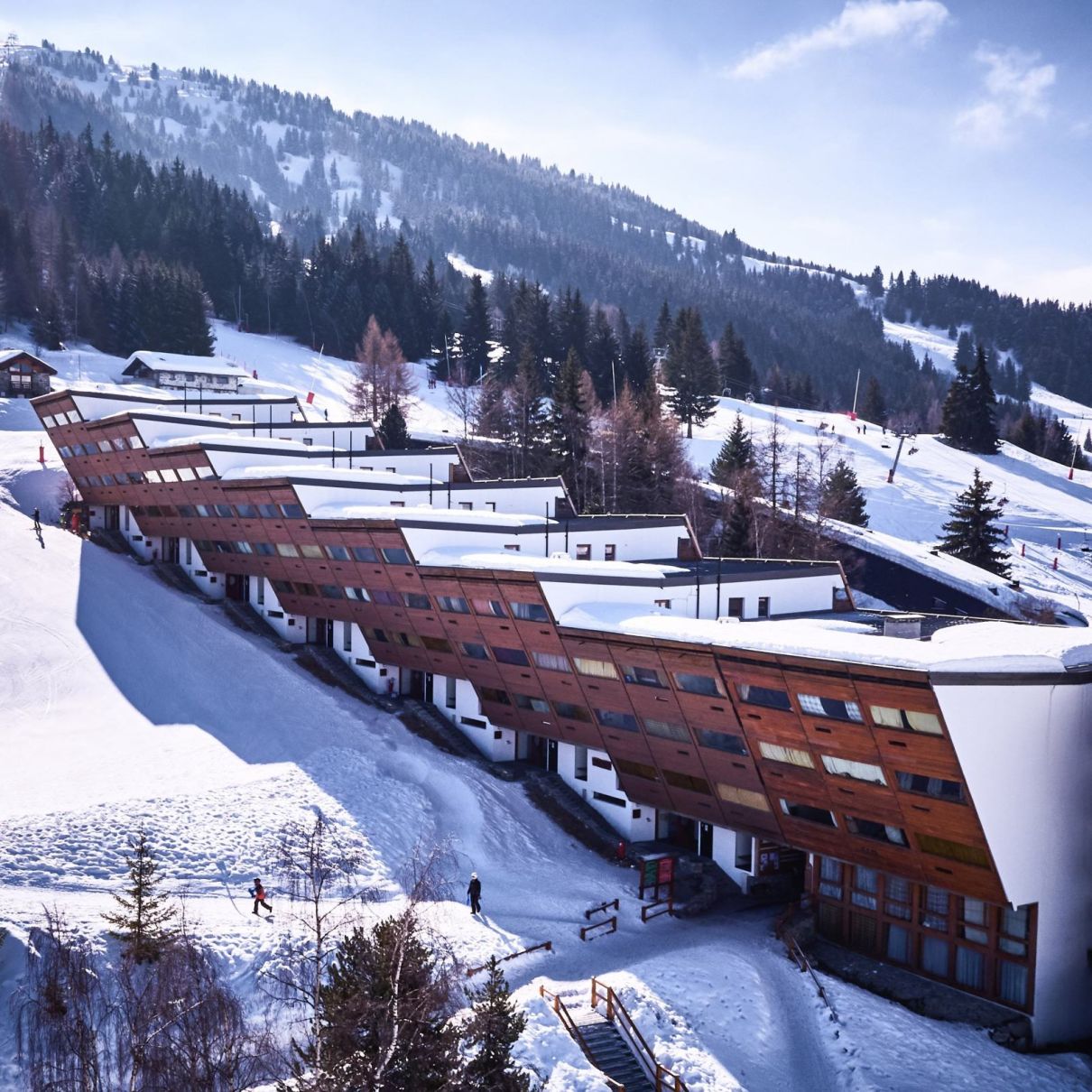Sustainable Ski: Charlotte Perriand's Resort, Les Arcs

Les Arcs, a French ski resort designed in the 1960's by an architect collective, is one of the greenest places you can ski.

Since its inception in the 1960's, Les Arcs-Bourg St Maurice (known as Les Arcs) has been considered one of the French Alp's most forward-thinking ski resorts, known for its sleek, pre-fab design. With 260 miles of piste and views of Mont Blanc, it was conceived by a consortium of architects led by Charlotte Perriand, he Parisian architect and associate of Le Corbusier, with a social vision for democratising ski-ing for the average holidaymaker.
Now, three years on from its half-centenary, Les Arcs is embracing another new vision; that of becoming one of the most sustainable ski resorts in the country.
Director of marketing and communication for Les Arcs, Marion Grognet makes sure the sustainability strategy – voted collectively – is followed and actions taken to reduce the carbon footprint of the station. She speaks to Billionaire.

Have things changed over the past decade?
Today, sustainability is accepted by all but that wasn’t the case 10 years ago. We established a collective green strategy four years ago which has already guided us extensively. For example, knowing that 57 percent of our carbon footprint is linked to transportation (against 2 percent used to run the resort), we have worked with the SNCF (National Train Services) to offer a free ride on the cable car up to Les Arcs for any train ticket purchased to Bourg St Maurice. We’ve also extended the hours from 7.30 am till 9pm for all seasonal workers to be to use it. We hope that fewer cars will come up to the resort.
At Les Arcs, you treat nature and the station like an ecosystem.
Since last year, as a ski resort, we have committed to the ‘Flocon Vert’ – or Green Snowflake –label that will help us grow and anchor our sustainable development strategy. The label is issued based on fulfilling 20 criteria divided into four themes: local economy, social and cultural, governance and destination, environment and natural resources. It helped us gather a governance committee which brings together professionals from the resort, skiing schools, tourism board members and local politicians. Together we listed 40 different criteria that will guide us to achieve our goals, whether they focus on family, accessibility, the quality of nature and the way landscapes can be kept intact (the Mountain Observatory helps us achieve this since 2012) or the preservation of mountain biodiversity.
What role will sustainability play in the future of the domain?
Before, the Tourism Board looked at maximizing the number of visitors and occupancy of the resort. Today, its role will be to balance out, aim for more sobriety, spread out affluence. We need to find new ways and new tempos to live in sync with nature. we need to avoid periods of saturation and open up reservations to new clienteles at other moments of the year. We cannot rely on a massive overflow of guests during a few weeks during a single season. Resorts have to adapt.
How important is knowing the land, the snow, the climate in the process?
We live in a data-driven world: we have figures and projections for everything. For example, generating artificial snow requires precision: we don’t need it everywhere and can control it better. Today’s tools help us calculate better to save resources and energy. The better the knowledge and data, the most accurate the response on the ground.
What collective green actions have you put in place that already make a difference?
To preserve humid areas which are key to keeping our resort healthy – they condense carbon dioxide and their presence helps other areas regenerate faster -we work hand in hand with the resort’s staff to get rid of local invasive algae that thrive on such wet zones and deplete them.
We’ve also introduced yearly ‘chores’ within local villages to help pick up rubbish along hiking trails, clean local fountains to preserve the natural quality of running alpine water. People happily get together: the strength and joy of being together takes over the repetitiveness of certain chores. In any green project, collectively is the only way forward.
en.lesarcs.com








